|
|
|
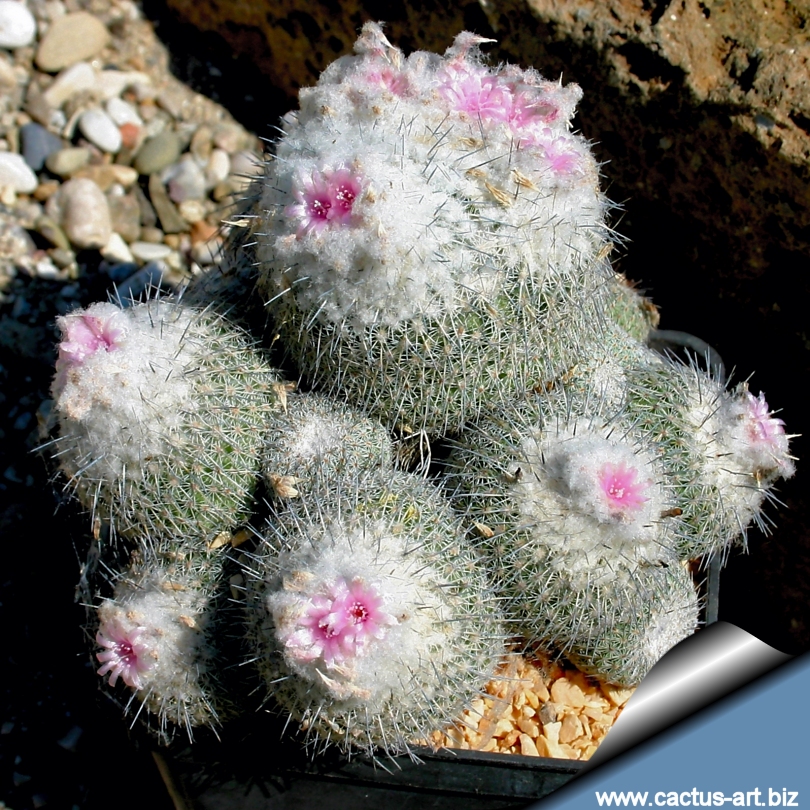
The plant
above is a
25 year-old specimen (Ex Prof. Lodi collection)
|
|
Notes: This plant was obtained in 1980 by Prof. Lodi at
the Botanical garden of Bologna. The original
cutting was less than 1cm Ø. Now the plants
have grown in a 10
x 10 cm square pot. This plant survived
all our attempt to kill it! For many years it was
overwintered it in a dark, non-heated garage during the winter months,
without any problem. Then we left
it for a whole year outside without any care, and
during the
1999-2000 winter it
was covered by snow. When the snow started melting it endured
several weeks of nocturnal
frost... but (surprise!) it survived
without any damage... Epithelantha is really an easy and strong
cactus to grow.
Description: E. micromeris ssp. unguispina is a little larger
than the standard form. The
stem is
globular, up to 6 cm, often
clumping over time. It also differs in that it generally has a small
projecting black-tipped
central spine, 4-5mm long, while the 18-24
radials are white and flattened, 2mm long.
|
|
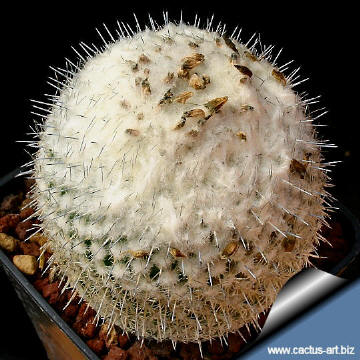 |
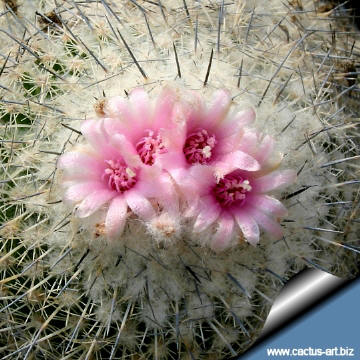 |
|
. |
|
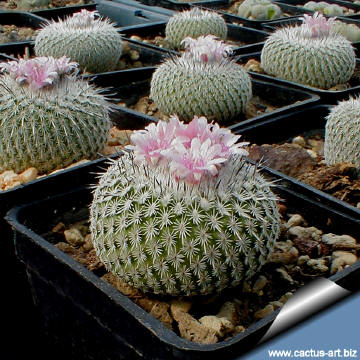 |
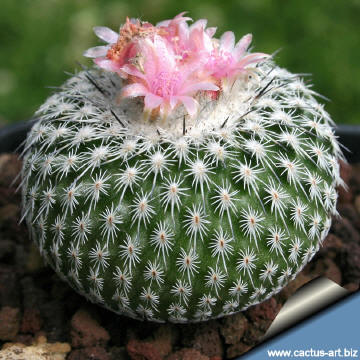 |
|
.
|
|
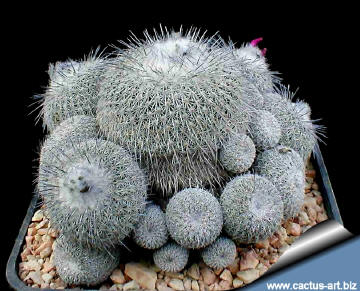 |
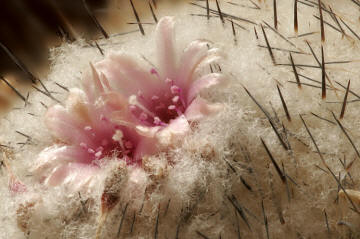
Photo &
©
copyright
by
Irwin Lightstone
Images may not be copied, downloaded,
or used in any way without the expressed, written permission of
the photographer.
|
|
Photo of conspecific taxa,
varieties, forms an cultivars of Epithelantha micromeris:
|
|
Advertising
|
|
|
|
|
Family:
Cactaceae
(Cactus
Family)
Scientific name:
Epithelantha micromeris
ssp.unguispina
Conservation status: Listed in
CITES appendix 2.
Synonyms:
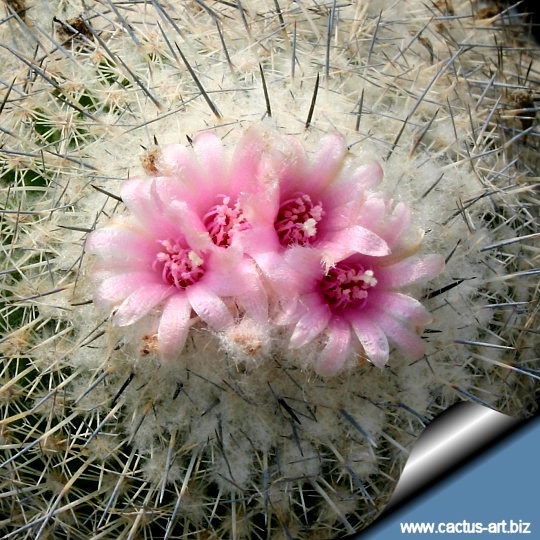
|
|
|
|
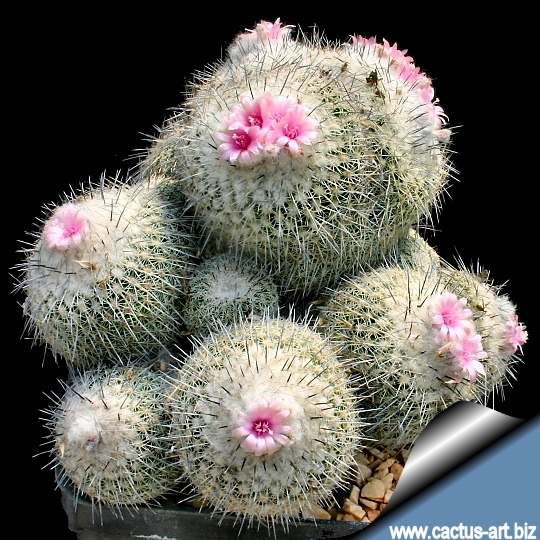
The
flowers are pink and larger than those of the other Epithelanthas.
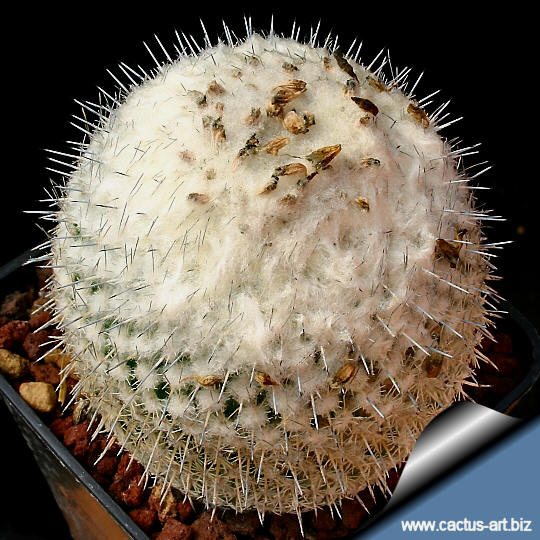
Cultivation:
Although regarded as a choice and difficult plant, in
cultivation it is relatively easy, but very slow
growing. These plants need very coarse
potting soil that
drains well (rot prone). Waterings should be
rather infrequent, to keep the plant compact and not become excessively
elongated or unnatural in appearance.
Frost Tolerance: Depending on the variety, it will take
-5° C (or
less) (Temperature
Zone: USDA
8-11)
Sun Exposure: It requires strong sun to part sun to
develop good spinal growth,
but some
summer shade in the hottest hours of the day is beneficial. Assure a good
ventilation.
Propagation: It can be reproduced both by seeds and cuttings, but it
is often grafted because difficult and slow to grow on its own roots.
Older specimens shoot
tillers from under tubercles,
so they can be grafted, which is a much easier way of propagation than
sowing.
Young seedlings are tiny and they need several years to reach
adult size, and require careful watering.

 |
|